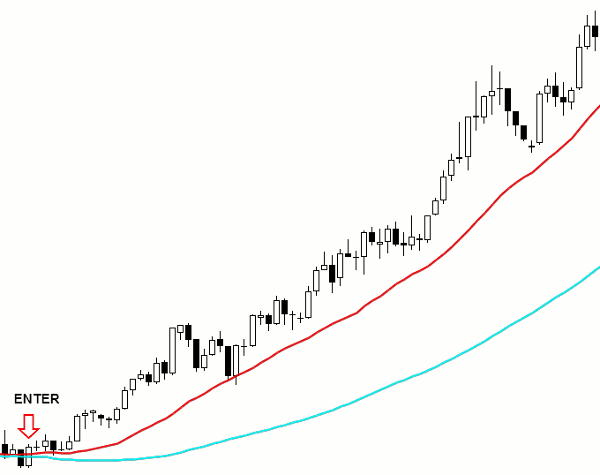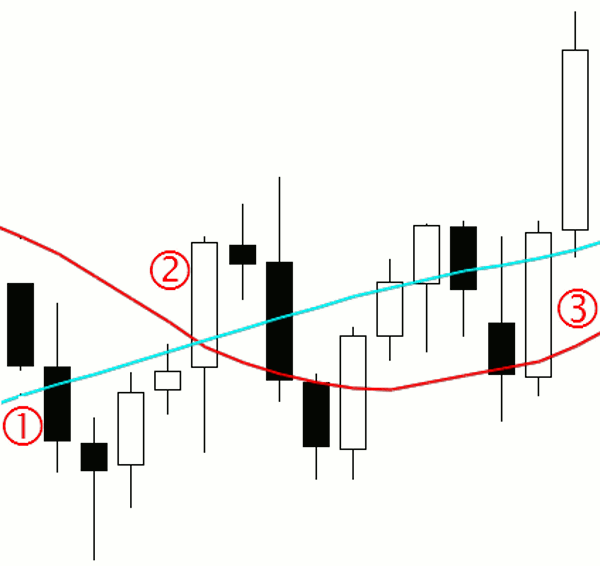 Today I'd like to welcome Steven Lee Jones to the Trader's blog. One of the things that makes him so successful in his trading plan is his entries. Steven has written an interesting article regarding how he enters a trade that I think you will enjoy. Please take time to read the article, comment with your thoughts about his methods, and please visit ForexProfitLauncher.com to watch a video from Steven.
Today I'd like to welcome Steven Lee Jones to the Trader's blog. One of the things that makes him so successful in his trading plan is his entries. Steven has written an interesting article regarding how he enters a trade that I think you will enjoy. Please take time to read the article, comment with your thoughts about his methods, and please visit ForexProfitLauncher.com to watch a video from Steven.
====================================================================
First of all, I want to thank Adam for allowing me to post here today. I'm mainly a short-term forex trader and over the years I've worked on the following entry method that's proven successful for me. It's not perfect by any stretch, but test it out on your own to see if it might be a good fit for your style. I truly value the blog and hope that my article can give you some insight into my trading and hopefully it can help yours, so let's dive right in.
First, a time frame must be established (daily, weekly, intra-day such as 60 minute chart). The long entry criteria for my trading plan is 1 close above the 72 Period Simple Moving Average (blue moving average line in chart below). This candle is called the signal candle.
The 72 Period Moving Average must be above, or have touched the 21 Period Moving Average. When the market trades and closes above the 72 Period Moving Average it has a greater probability of continuing into that direction as the 72 Period Moving Average is a much slower moving average and confirms that the trend has most likely changed and is moving into the new direction.
The candle must be a strong white candle, where the open and the close for that trading session is in opposite thirds of the strong long bar. When determining if the candle is a long strong bar, you are comparing it to recent previous candles.
In the image below you will notice the market fell down for 3 candles before having a strong white candle where the open and the close are on opposite thirds of the bar. The white candle is also quite long (strong) in comparison to the previous bars.
As soon as you observe that the market has fulfilled the above criteria (1 daily close of a long strong bar with the open and close in opposite thirds above the 72 Period Moving Average and the two moving averages have crossed so that the 72 Period Moving Average is temporarily above or they have touch) then you can go ahead and enter the next day “at market”.

Make sense? Ok, now onto the Opposite Thirds Rule...
Opposite Thirds Rule
It is important that the candle has the open and the close in opposite thirds of the bar, the 3
scenarios further below will explain in more detail why.
This image below shows a candle that has the open and the close in opposite thirds of the bar should
you cut the bar into three equal pieces.
Corresponding commentary for the image below can be found below and is assuming the daily time frame (daily candlestick chart):

Candle 1:
RULE: 1 Daily Close Above/Below 72 Period Moving Average
>Yes: The black candle that is to the right of the figure #1 has closed below the 72 Period moving average, ready for a possible SHORT trade.
RULE: Strong/Long Candle?
>Yes: It would be considered a strong candle in comparison to the previous candles as it has a range that is much larger than the previous candle's.
RULE: Candle Open & Close in Opposite Thirds of the Bar?
× NO: As you can see the Open is midway down on the bar. Therefore, no valid entry.
Candle 2:
RULE: 1 Daily Close Above/Below 72 Period Moving Average?
>YES: The white candle that is to the right of the figure #2 has closed above the 72 Period Moving Average, ready for a possible LONG trade.
RULE: Strong/Long Candle?
>YES: It would be considered a strong candle in comparison to the previous candles as it has a range that is much larger than the previous candle's.
RULE: Candle Open & Close in Opposite Thirds of the Bar?
× NO: As you can see the open is midway up on the bar. Therefore, no valid entry.
Candle 3:
RULE: 1 Daily Close Above/Below 72 Period Moving Average?
>YES: The white candle that is to the left of the figure #3 has closed above the 72 Period moving average, ready for a possible LONG trade.
>YES: The 72 period moving average (blue) has crossed above the 21 period moving average (red).
RULE: Strong/Long Candle?
>YES: It would be considered a strong candle in comparison to the previous candles as it has a range that is equal to or much larger than the previous candle's.
RULE: Candle Open & Close in Opposite Thirds of the Bar?
>YES: The open and the close are in opposite thirds of the bar. A valid entry!
Interestingly enough, this third rule saved the trader from entering into two losing trades. Ok, now it's time to take some of what I've shown you and apply it to your own charts before you actually trade it and see if it's something that will work out for you!
Best of luck in these trying markets!
Steven Lee Jones
Watch a video message from me here: ForexProfitLauncher.com

I would like to thank Steve for posting this very interesting rule " Opposite Thirds Rule" and steven for posting the Stock screen Codes. Your kindness is appreciated.
Has anyone responded to Jane's question? Can Mr. Jones speak to this? Thanks
i have the same question as jane and sharkattak on 1-29-10. i don't understand why the 72 day would be over the 21 for a long position. could you clear this rule for me? thanks
Interesting strategy. Just a question though - are the blue and red lines labeled correctly in your Candle #1 figure? If you are going LONG wouldn't the 21 period be crossing above the 72 period? Thanks.
Same question as Jane: 21MA>72MA?
jane i have the same question
I hope Steven reads these comments... If one of the editors could pass this question on it would be appreciated.
Steven, have you tested whether volume spikes improve the reliability of this signal?
Yes of course. The core system can be improved by users. the idea you suggested is a great example.
Kind regards
Steven
I've read the blog about "Opposite Third Rule" and it looks like it might work very well. I also did a little back testing with it. Steve Warshaw, (forgive me if I got the name wrong) wrote a blog and created a screen at Stock Fetcher.com and I put the code in exactly as he wrote it, but I am getting no results. Has anybody else tried this? If so could you give me some pointers as to what I might be doing wrong? I sure would like to scan for some stocks using these rules. Also, I am a little confused on the exit rule. I'm not sure it was ststed or I'm not seeing it. What is the exit rule? Exit when it closes below a MA, use trailing stops, % stops, etc.? I would appreciate any help you can give me.....Thank you
Hi Dave, make sure you click on the SF 2.0 button at the top of the page on stockfetcher.com before pasting in the code and clicking fetch stocks.
-Seve
Hi Steven
I would like to thank you for the concise explanation. Your diagrammes are clear, unlike so many others that are used with the best of intentions but which confuse the 'newbies' and 'wannknows'.
Gary
Hi Gary
Thanks for your comments, glad you liked the post.
Kind regards
Steven
Do you use simple or exp moving average?
Ron
Hi Steven,
This is an awesome looking strategy! I also run a trading blog, and my niche is creating stock screens for individual trading strategies just like this one.
In fact, I liked this strategy so much, I created a stock screen that meets the criteria for this strategy and put together a video on how to do it here: Japanese Candlesticks - Long Entries Using the Opposite Thirds Rule
I'm going to do a blog post for my readers about this screen tonight and put up some real time sample charts, but I wanted you and the rest of the Marketclub Trader's blog readers to have a chance to check it out first.
take care,
Steve
Hi Steve
Sounds good to me, i'll be interested in reading your post.
Kind regards
Steven
here's the link to the blog post: http://www.recordpricebreakout.com/japanese-candlestick-trading-stock-screens-for-15-candlestick-patterns/